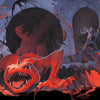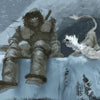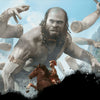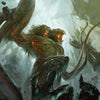5 Tricks to Take D&D Combat to the Next Level
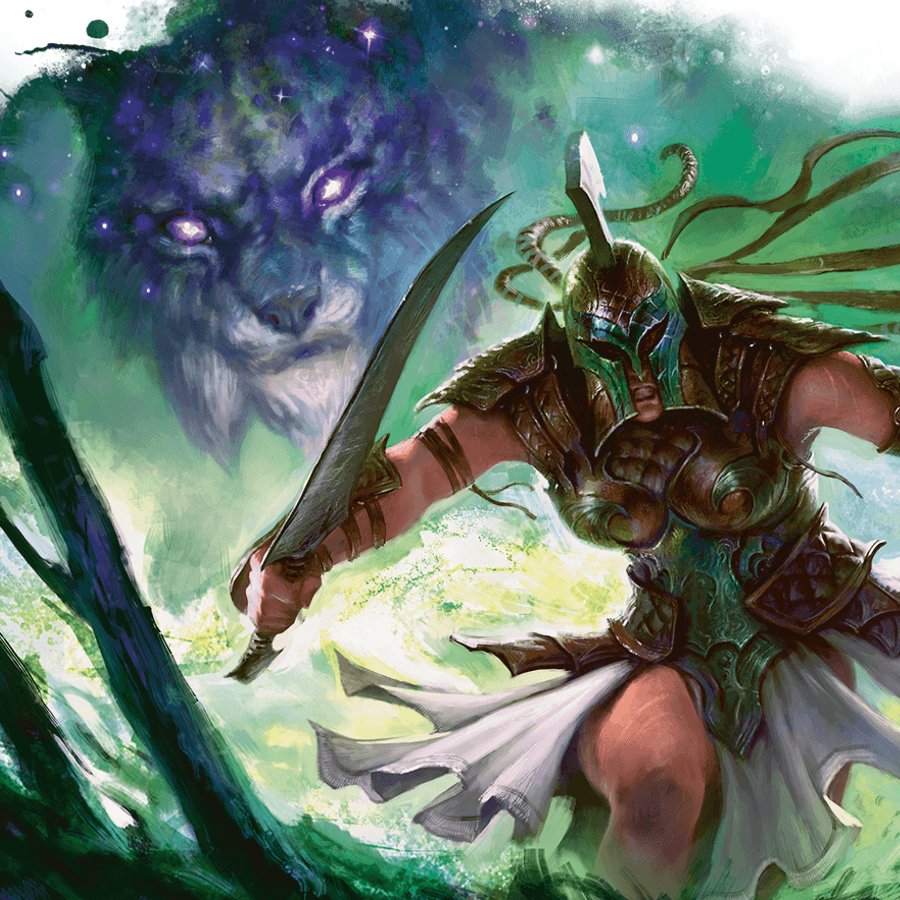
Written by Luke Hart
If you were to analyze your average D&D group and what they spend their game time doing, I’m willing to bet you would find that many groups spend most of their time in combat encounters. So, if you’re playing a game that lasts four hours, you might spend two or more just duking things out with the bad guys. Of course, there are exceptions because I recognize that many gaming groups enjoy social interactions more than combat.
However, despite spending so much time in combat, combat in D&D often falls rather flat. It gets old, stale, and boring. What was once exciting becomes mundane. This might be part of why so many groups disdain combat and prefer to solely engage in social interactions, which they erroneously refer to as roleplaying, not acknowledging that the entire game is roleplay—but we won’t get into that rant today. We’ll just move on.
So, the question then becomes: Why is combat in D&D sometimes so boring? I think it has to do with how game masters implement it and, to some extent, the players. The bones for amazing combat are in the game system, but we sometimes don’t effectively pull everything together in a way that would deliver enthralling combat every time.
You see, many times, our combat simply consists of characters and monsters standing around and swinging their weapons at each other, using the occasional special ability or Dash, and perhaps casting some spells, assuming they don’t just get counter spelled, of course. However, combat often just boils down to standing in place and swinging your weapon, which equates to rolling dice and doing math. If you can boil combat down to just rolling dice and doing math, that is at the heart of why it can be so boring.
Today, we’ll go over how we can make D&D combat actually good. How can you, as a game master, improve the combat in your games?
Watch or listen to this article by clicking the video below.
Please note that we’re going to specifically talk about combat encounters, which is why I’ve been saying combat so much in this article. Someone will inevitably go on a rant about how not every encounter is combat, and they are right—in fact, I’ve gone on that very same rant myself at least a few times. So, we will not address how the encounter starts, who attacks first, or whether the players have a choice or any agency in the encounter resulting in combat. Today, we will assume that through one mechanism or another, the encounter has resulted in combat.
#1 Creatures
The first thing that makes up combat is the creatures the characters are fighting, and there are a handful of things you want to keep in mind here.
More Is Better
Even if it is powerful, one solo creature is rarely an interesting or memorable fight unless it can avoid the standard surround-and-pound, wherein everybody just gathers around the creature and beats it into oblivion. On a somewhat related tangent, it is also important to note that the opposite can be a problem. A solo monster or a group of monsters that fly out of reach, not allowing the characters to hit or attack, can also lead to frustration and boredom. But our guiding rule here is that variety is the spice of life, which applies in a few different ways.
A weaker boss monster with minions generally presents a more interesting challenge for characters than a solo boss, even if they have legendary actions. For instance, while writing the Escape from the Fey adventure module, we designed some of the monsters as solo boss fights.
However, we had to be particularly careful in designing those monsters so a solo fight would be interesting for players. It is not an easy task, which is why we often avoid those solo boss fights. I usually have a boss monster with a handful of minions because I know it will result in a more interesting fight for everyone at the game table with less effort.
Introducing variety among the minions takes this a step further. You might have a hobgoblin boss with goblin followers. Those goblins will have a mix of short bows, swords, and spells to fling at the characters. Even better than that, you might have a hobgoblin with a winter wolf ally and a few goblin sidekicks. Now, the equation has become far more interesting. The hobgoblin is swinging his massive two-handed sword, the winter wolf is breathing ice and pain down upon the characters, and the goblins are shooting arrows and flinging fire bolts.
This gives the players a puzzle to solve, introduces the idea of tactics, and presents them with a challenge to overcome that involves more than just standing in one spot and attacking the same enemy over and over again. You now have a dynamic situation with various challenges and problems to overcome.
These are some of the very same reasons that one solo boss is rarely interesting; it doesn’t have all those elements. And even if it technically does, they cannot be implemented effectively in actual practice at the game table.
Also, note that variety doesn’t need to be mechanical. You can use the exact same stab lock and just vary the descriptions. Nobody cares if the one D6 damage that a goblin is inflicting is from a sword, a hand axe, an arrow, a fire bolt, or from a handful of splinters that they fling into a character’s eyes. You can literally use the same stat block and just change your descriptions of things. It’s the variety in how those attacks are described and the variation itself that makes for more interesting foes and combat.
The tl;dr here is that same is boring and variety is interesting.
Enemy Motivation
Why are they at that location? Is it their home? Creatures are much more likely to fight to the death if they’re defending their home. Or are the creatures looking for something? What is it, and why do they want it? If a creature was sent there by their boss in search of a special object and they are facing consequences for failure, they’re likely to fight harder. However, they’re more likely to break and run if they’re just there looking to put some money in their pockets as mercenaries.
Why are the creatures fighting instead of talking? Perhaps they did talk first, which failed, so things escalated to aggressive negotiations. But what if that wasn’t the case? You have to ask yourself: Are these creatures territorial? Were they ordered to kill or capture the characters? Are they hungry or driven by a survival instinct? You see, all of this helps craft more interesting enemies, which leads to more interesting fights. It also gives you the information you need as the game master to roleplay the creatures more effectively both in and out of combat.
Tactics
The tactics you have your bad guys use in combat should fit their intelligence, instincts, and capabilities. Smart enemies should use the environment, seek to exploit the characters’ weaknesses, and so forth. These are the very same things your players’ characters, who are usually fairly intelligent, use against the monsters, so it makes complete sense that intelligent enemies would do the same.
Tactics should vary from one encounter to another. The same thing over and over will be boring or possibly frustrating. I know players tend to use the same things over and over again because they are very effective: hypnotic pattern, spirit guardians, fireball, and all of the other very powerful options—one might argue overpowered options—that they have at their disposal. However, if you, as the dungeon master, do that as well and simply start spamming all of the most powerful spells and abilities in the game, I wager that it will get fairly boring for both you and your players.
Remember, tactics don’t just include maneuvering around the battlefield; they also include which enemy will attack, which spells to cast, and whether to shove someone to the ground and grapple them or just attack them with your sword. Do you attempt to disrupt the spellcaster’s concentration? Or do you cast the spell magic instead? Should you take cover around the corner?
Doing things the players don’t expect but still make sense for the enemies involved can create really interesting surprises. For instance, using a rarely used spell or unique ability the players have never seen can make for a lot of fun.
Do note, though, that the tactics you design for your enemies in a combat encounter should be something the characters can reasonably counter, given some thought and time. I once designed a rakshasha monk that had crazy insane mobility. It could travel about 90 feet in a round with justice movement, it had the equivalent of a flyby attack, and I’m pretty sure I even gave it a teleport ability.
Now, I’m gonna tell you, my players were hard-pressed to pin that monk down and do anything to him. This boss fight was a beast because rakshashas are very resistant to spells. They eventually kind of figured it out, but even then, the particular tactics I designed for this monk were almost impossible to counter. I think I over-tuned that encounter, but it was still a fun fight.
Individuality
Variety can be as simple as kobolds of five different colors, a mix of male and female ogres, or soldiers with different kinds of armor and weapons. A creature’s use of various weapons makes them unique, but so do special traits, mannerisms, and motivations. A battle with three goblins will be way more interesting if one goblin constantly giggles during the entire combat, another goblin is a complete coward just waiting for a chance to run, and the third goblin is trying to get the coward killed because he is untrustworthy and wants to get the giggler killed because he is absolutely annoying. You see, a combat like that would be far more dynamic and entertaining than just three goblins that attack.
Also, don’t forget to consider morale in your combat. Unless your creatures don’t value their own lives, they need a real motivating reason to fight to the death. Shoot, I would submit that most creatures would need a motivating reason to get into a fight at all, considering that, in D&D combat, the most likely result is disfigurement, maiming, or death. At any rate, creatures that run create tension because the players don’t know what that creature will do if it gets away.
Right now, I’m running Escape from the Fey for my Patreon players, and they were just in combat with a few emberkin. Toward the end of combat, two emberkin broke ranks and began to flee toward the orchard where there were dozens more emberkin. My players scrambled to stop them, using all manner of tactics and persuasion to do so. However, one of the emberkin did get away, and it alerted the rest of its brethren, resulting in a massive search party for the characters.
Creatures that surrender create an equally interesting situation. Now, you have a moral and/or logistical quandary. After the characters question the prisoner, what do they do with him? Do they kill him in cold blood? Do they tie him up and leave him stashed away somewhere, risking that he might escape and alert his companions?
#2 Terrain and the Map
Monster mechanics are important for making the combat unique, but one might argue that a memorable setting is more important than complex mechanics. This is where the map and terrain you use contribute to the enjoyability of your combat.
Like creatures, variety is important with the terrain. Here are some key elements to consider when making maps and terrain that will lend themselves to interesting combat.
Terrain Levels
Consider having high and low ground and ways to traverse from one to the other. These levels should complicate the fight to a certain degree and help inform tactics on both sides.
Choke Points
Movement is important on any battlefield, and choke points allow enemies and players to try to gain an advantage by restricting their foes’ movement.
Also, you want to scatter different elements across the map to provide cover and obstacles throughout the area. These might be tables, chairs, and bookcases, or tree trunks, undergrowth, fallen logs, rivers, cliffs, or boulders.
Hazards
Next, consider adding hazards to your combat map. You might have terrain that shifts and changes throughout combat or dangerous terrain that can damage both characters and enemies alike. You might have places where movement is restricted, or care must be taken to avoid damage or danger, such as a narrow walkway over a ravine. The enemies might have also set traps for invaders—or perhaps there are traps not even the enemies know about and could fall victim to.
One of the most important things you’re looking for when you design maps this way is to have an evolving battlefield. You see, no matter how interesting and complex the battlefield is, if the characters and enemies go to one spot and fight right there without moving or utilizing the elements on the combat map, the battlefield may as well only be that one location on a naked, featureless grid.
Thus, the battlefield, combat map, and enemy tactics should encourage movement and utilize the different elements on the field. Furthermore, you might have the battlefield change throughout the combat. You might have ice floating on a river, a ship in choppy water, or a volcanic cave with a floor that shifts between open and closed cracks.
#3 Time
You’re probably familiar with the importance of tracking time in your game at the high level of days, weeks, and months. You probably also know that you can use time pressure to influence elements at that same high level. The evil bad guy might complete the horrible ritual in one week’s time, putting pressure on the characters to get stuff done. However, you can also use time pressure in combat.
Having combat with deadlines increases drama. Perhaps patrols come by at regular intervals, and taking too long in any particular fight might result in reinforcements. There might be a time hazard that counts down to a massive explosion, or you might have an NPC bleeding out, and the characters need to get to him before it’s too late.
Here are a couple timed elements you can use in your games. You can have combat stages, where the combat changes after a specific interval of time. For instance, waves of enemies might arrive on certain rounds—a trick I use myself with some frequency—or the boss monster might appear for one round, then leave for the next three while his minions beat on the characters. Or a boss monster is constantly transforming, and their stat block changes to something different every two rounds.
You can also have timed hazards or benefits active during combat while the characters fight the enemies. Razored pendulums swing across the hallway every three rounds, affecting random spaces. A geyser of magma might explode every four rounds. There might be a healing burst that radiates from an artifact of power, which restores hit points to everyone in a certain radius every three rounds, benefiting enemies and characters alike. Or, the walls might be closing in, and the room will disappear completely in six rounds; if the characters aren’t through the door on the other side by then, they will not have another chance to get through it for 100 years.
You can also implement special end-game conditions during combat. This is something that would end the battle other than victory for one side or another. For instance, an overwhelming force might be about to arise, and the characters only have three rounds to defeat their enemies or escape. The heroes might have to prevent a bomb from detonating in round 4, or the boss monster might ascend to godhood if not defeated in under one minute or ten rounds.
#4 Dynamic Elements
Here are some other dynamic elements that you can include in your combats.
Lair Actions
These do not have to be reserved only for legendary monsters or even for D&D 5th edition. You can technically add them to any monster you like.
Weather and Atmosphere
You can use weather and atmosphere to create complications during combat. Rain obscures vision slightly and makes terrain slippery. Dark environments—especially those that impede or weaken dark vision—can create issues with visibility and footing. Other dangers, like lightning, could be random and damage characters and monsters alike. Extreme temperatures might exhaust or damage characters unless they take certain actions or precautions. Wind, much like difficult terrain, can change how the characters move.
You can also place secondary objectives into your combat. The characters might have to protect an NPC or object. They might need to retrieve an item or rescue an NPC in the middle of combat. They might need to avoid notice or attempt to draw out a smaller group of enemies from a room rather than fight everyone at once. The characters might need to escape overwhelming odds, a cave-in, rising waters, or other elements that make them need to leave their current location.
Twists in the middle of combat can make things amazing. For instance, in round three, the characters may somehow discover that killing the boss or minions has a major consequence, making non-lethal combat necessary. Perhaps a third party arrives at the combat, and they oppose both sides; now you have three-way combat!
A sudden warning of more approaching enemies rings across the battlefield, increasing the stress of the situation and immediately adding a ticking clock to the combat. Sudden darkness or a blinding light might appear, changing the visibility conditions. You could have a sudden change to the terrain, such as the floor dropping away in places, a ship splitting in half, or an avalanche filling part of the room.
#5 Purpose and Reward
Very few groups will probably find combat for the sake of combat enjoyable. Instead, players usually like to know that there is a reason or purpose for combat. It might be something as simple as an ogre guard blocking the way forward or the need to eradicate a group of goblins to stop them from attacking caravans. It doesn’t have to be terribly complex, but there needs to be a story reason attached to a combat encounter. If gnolls charge over the hill to attack the characters as they travel, it should be because the characters are trespassing on the gnolls’ sacred burial ground, not because the game master decided they just needed a random encounter at that point in the game.
Related to this, there should also be a reward for every combat encounter. Now, this doesn’t always have to be a monetary reward, such as coins, gems, or magic items. It could be something satisfying like getting revenge on the imp that has been mocking your characters for the last three hours, always keeping just out of range or around a corner. Whatever it is, your players should feel a sense of satisfaction and accomplishment after they defeat a group of bad guys.
Get the Checklist and Watch the Playlist
Now, I’ve compiled a checklist from my videos of everything you should consider when creating encounters and placed it on the DM Lair Store for free in case you’re interested. This will serve as a handy guide for designing your encounters.
I also have an entire encounter creation playlist filled with more videos to help you create awesome encounters for your games. You can watch them here.
What’s the Deal with All the Missing Rules for 5e?
Are you frustrated that there are some big gaps in the 5e core game system since entire rulesets seem to be missing?
Believe me, we feel your pain. That’s why, in the Big Ruleset Bundle, we have created several lightweight rulesets to fill in the gaps that the 5e designers left behind:
- Mass Combat
- Sieges
- Hexcrawls
- Points of Interest
- Advanced Poison
- Hexes
- Curses
- Crafting
- And more
Remember, these rules are lightweight, meaning it won’t take you and your players ages to read and learn them!
So, if you’re tired of having to homebrew your own rules or make on-the-spot adjudications when these situations arise, pick up the Big Ruleset Bundle. Don’t spend another second wondering why it isn’t in the core rulebook.
Also, if you’re looking for information on running Skill Challenges in 5e—another mechanic oddly missing from the game—check out our article on How to Run Skill Challenges in D&D 5e.
-
Posted in
Game Master How-To Articles



